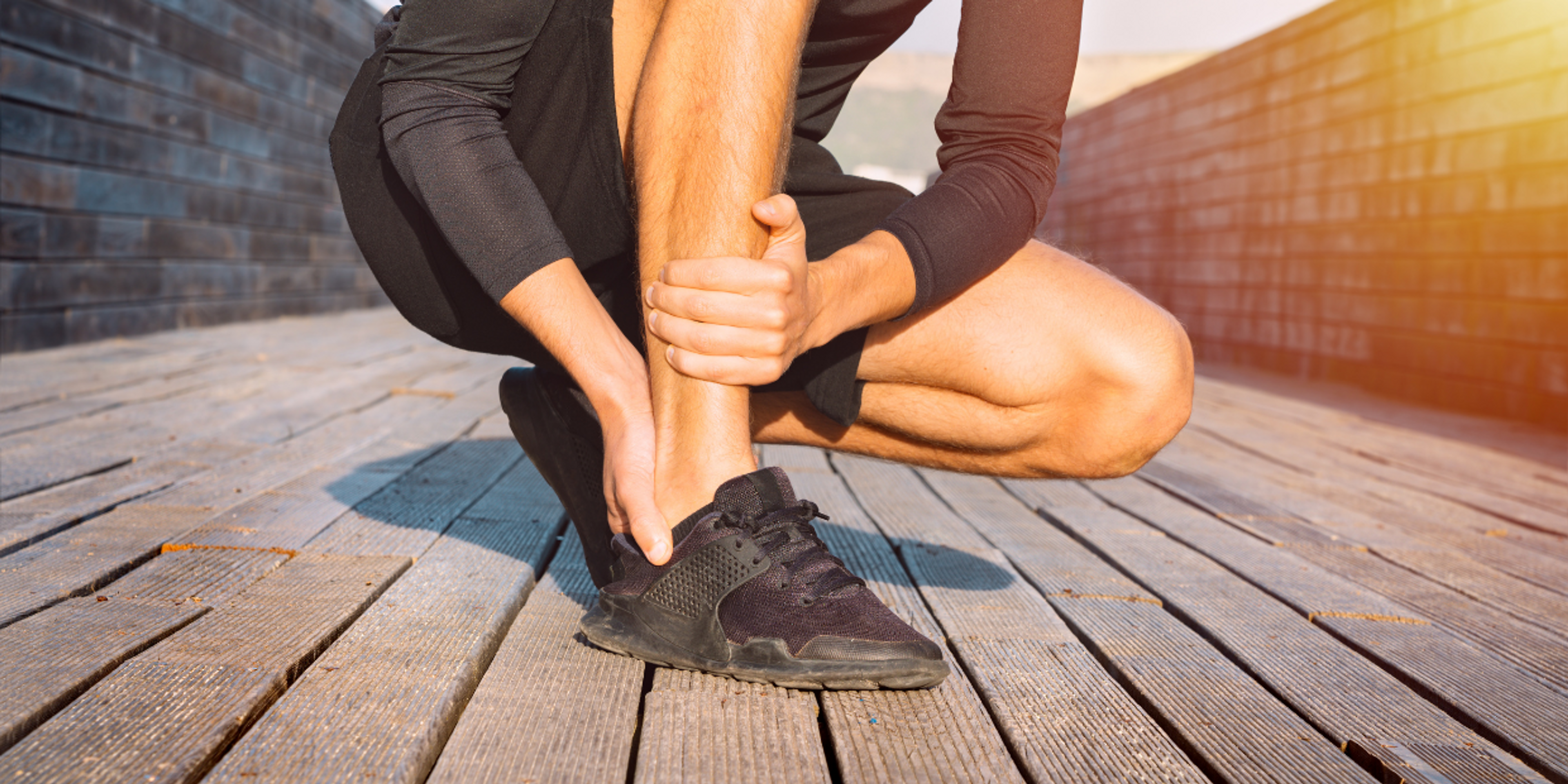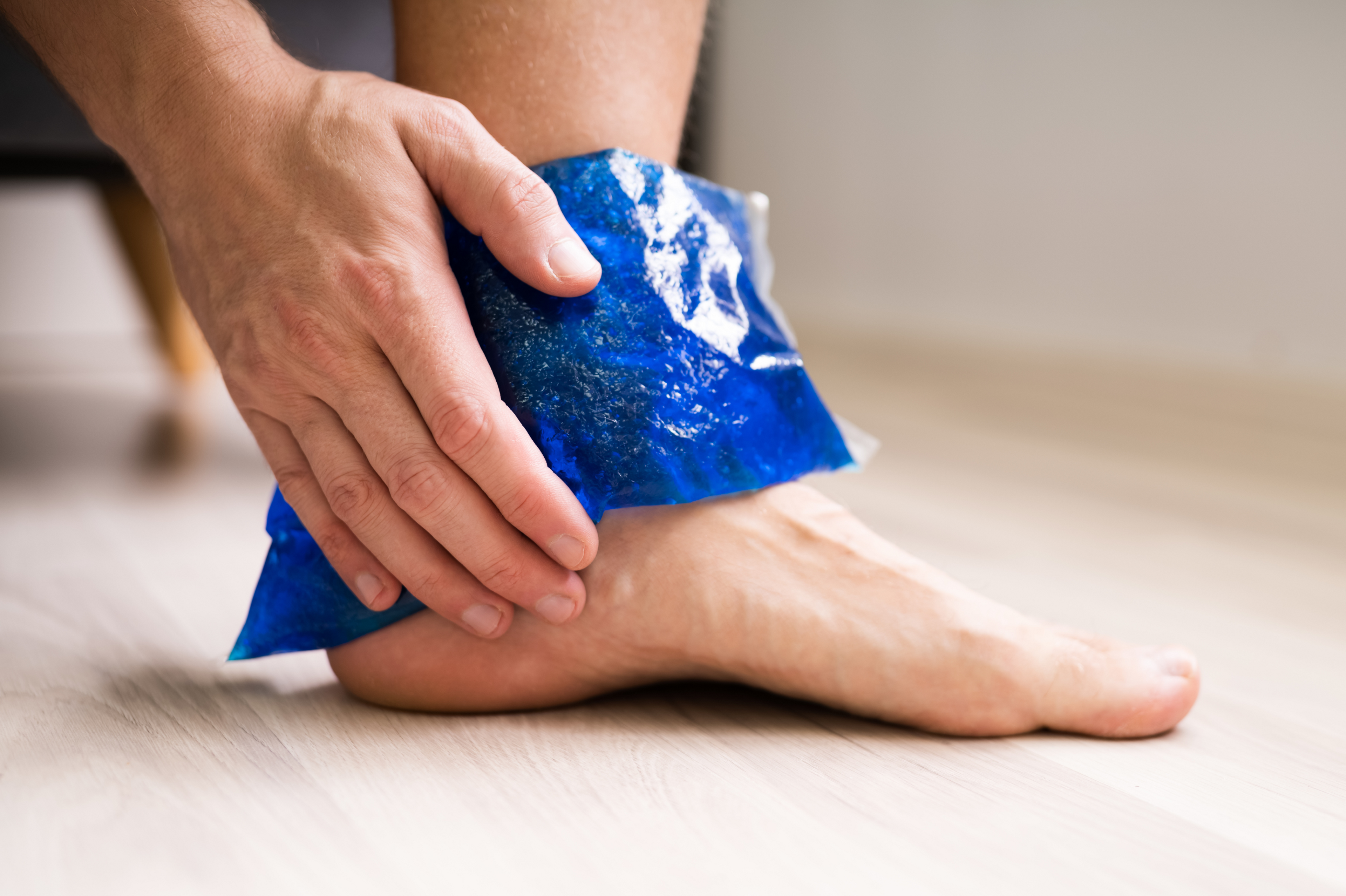Running with Achilles pain: Figuring out if it’s right for you (and what to do if it's not)
Why running hurts when you have Achilles tendonitis
When injured, your Achilles tendon loses strength and endurance and becomes easily irritated. As a result, it can't handle the same load as before.
Previously, we discussed the most common causes and effective treatments for Achilles tendonitis, offering runners a practical guide on how to recover quickly and efficiently.
To allow your Achilles tendon to heal, you need to decrease its total workload in your daily exercises, activities, and running training. However, figuring out your optimal exercise workout and intensity level can be tricky.
Here's a simple guide to assessing the load capacity of your injured Achilles tendon.
Guide to assessing general Achilles load tolerance
Pro tip
The Exakt app makes managing Achilles pain and understanding your body's limits much simpler. The app, designed with expert physical therapists, offers personalized exercises and robust monitoring tools that help you determine your Achilles' load tolerance and track your recovery progress.
Can I run with Achilles tendonitis?
There's no one-size-fits-all answer to this question. It will depend on your unique injury circumstances and your Achilles tendon's response to your running.
Below, we've used the previous guidelines to help you figure out if running is right for you. (We'll talk about alternatives later.)
1. Assess your Achilles' response to walking
Can you walk 30 minutes briskly without experiencing increased symptoms during and in the 24 hours after?
If not, it's best not to run for now.
2. Assess your Achilles' reaction to running
- Does your Achilles tendon show signs of irritation (see the guidelines above) during or within 24 hours after a run? If yes, try adjusting your speed, distance, frequency, terrain, etc., to see if it improves.
- Did adjusting your running session allow you to run without irritating your Achilles tendon? If yes, it's likely OK to continue running within those parameters.
- Did running irritate your Achilles despite the adjustments? If yes, take a break from running and focus on your rehab exercises.
Pro tip
Now, let's discuss some common adjustments you can make that can help you continue running with Achilles tendonitis.
How to adjust your running with Achilles pain
If running is causing discomfort, before taking a break from running, you can make some adjustments. These tweaks aim to reduce the strain on your Achilles, which may help reduce your pain and allow you to continue running.
Speed
Running faster increases Achilles tendon loading and can aggravate Achilles tendonitis.
What to do: Run at a slower pace. It's best to start with a slow jog and keep your running speed at a level that doesn't cause your symptoms to flare.
Distance
Long runs are more likely to exhaust you and push your Achilles beyond its current capacity.
What to do: Try shorter runs. 5 miles may seem relatively short to experienced runners, but if that distance worsens your symptoms, you need to test something significantly shorter (e.g., 2 miles) to find your correct baseline.
Terrain
Running uphill, on steep inclines, or soft sand increases the stretch and compression loads on the Achilles tendon.
What to do: Run on flat, firm surfaces. Those with Achilles tendonitis often find it more tolerable than softer, uneven, or undulating terrains.
Frequency
Sometimes, your injured tendon needs more recovery time between sessions.
What to do: Reduce the number of runs you do per week and allow for one or two recovery days in between.
Fatigue
Running on tired legs can push your Achilles tendon beyond its load tolerance sooner.
What to do: Take a break from running or reduce your running intensity when your body is tired, physically and mentally.
Total daily load
People with Achilles tendonitis often overlook the impact of the total daily load (cumulative fatigue) on their Achilles tendons. For instance, your Achilles tendon strength training, long walks (even slow ones), stair climbing, and running all contribute to this load.
What to do: Monitor your total daily load to prevent excessive strain on your Achilles tendon. Plan your workouts to avoid running on days you're doing other high-load exercises. Instead, stick to low-load activities on the days you want to run.
Adjusting your running shoes can also be a factor to consider when experiencing Achilles tendon pain.
Best running shoes for Achilles tendonitis
Although there’s no conclusive evidence for the best running shoes to treat or prevent Achilles tendonitis, some runners have found relief by:
- Switching to more supportive shoes, or
- Using shoes with a higher heel, or
- Placing heel-lifting inserts into their shoes.
Flatter or zero-drop (no heel-to-toe height difference) shoes can increase the strain on your Achilles tendon.
What to do: Switch to shoes with a higher heel-to-toe drop. This will reduce the workload on your Achilles tendon while running, resulting in less pain. Wearing shoes with adequate heel cushioning and replacing worn-out shoes may also help.
Prefer flat or zero-drop running shoes?
Finding the correct shoes and inserts is a matter of personal preference and experimenting with different types to see what works best for you.
Learning about other effective home treatments for Achilles tendonitis will also help you keep running for longer or get you back to it sooner.
Next, let's look at your options when you need to take a break from running due to Achilles pain.
Cross-training options for Achilles tendonitis
When Achilles pain stops you from running, cross-training can help you effectively maintain your fitness while allowing tendon healing. It can also help replace that endorphin boost you usually get from running.
The best ways to cross-train when you're recovering from Achilles tendonitis include:
1. Walking
Walking can help build your injured Achilles tendon's tolerance to weight-bearing and prepare it for a return to running.
Tips and considerations for walking with Achilles pain
2. Swimming
Swimming is an example of a low-load activity for the Achilles tendon. It provides an excellent cardiovascular workout without stressing the Achilles tendon.
If kicking off from the wall hurts, avoid it until pain-free.
3. Cycling
When pedaling, the position your foot is in causes the Achilles tendon to stretch and compress against the heel bone.
Suppose your tendon is sensitive to being stretched, as is often the case with insertional Achilles tendonitis. Then, this position can increase your pain.
But cycling isn't off-limits for everyone — even those with insertional Achilles pain!
The only way you'll know if cycling is suitable for you (or not) is by testing it. Do a short 10 to 15-minute bike ride and monitor your symptom response within 24 hours. Gradually increase cycling distances if there's no increase in your pain or stiffness.
You can reduce the risk of irritating your Achilles tendon injury by:
- Using a stationary bike
- Cycling on a medium to low resistance
- Limiting your cycling distance
- Not standing up on the pedals while cycling
- Taking care not to drop your heels below the pedals
4. Elliptical trainer
Doing workouts on the elliptical trainer will likely be OK once you can walk pain-free at a leisurely pace for 30 minutes.
We suggest testing a very gentle and short session first. But remember to wear the right shoes (like running shoes) to reduce the tension on your Achilles tendon, as discussed in the previous section.
5. Running in a swimming pool
You can start running in the pool early in your rehab by using a floatation device and running without touching the bottom of the pool.
Pool running, where you push off the bottom of the pool, may be an option, but only in the later stages of your Achilles rehab because it can irritate your Achilles tendon in the acute stages of your recovery.
You can consider pool running once you're able to walk briskly without experiencing an increase in your symptoms.
Your Achilles tendon recovery doesn’t have to be a guessing game. With the Exakt Health app, you can access evidence-based rehab programs and expert guidance, all from the comfort of your own home.
Conclusion
Recovering from an Achilles injury requires prioritizing tendon healing. Deciding to run with Achilles tendonitis can be challenging and daunting.
But here's what you should remember:
- Listen to your body: If running hurts, make adjustments to reduce the strain on your Achilles.
- Assess and adjust: Use the guidelines above to gauge your Achilles tendon loading capacity.
- Choose proper footwear: Try switching to more supportive shoes or using inserts if necessary.
- Consider alternatives: Cross-train by walking, swimming, cycling, or using an elliptical.
- Consult experts: If your pain persists or your recovery is taking longer than expected, ask a professional for advice or use evidence-based rehab apps like the Exakt app to guide you safely through your recovery.



